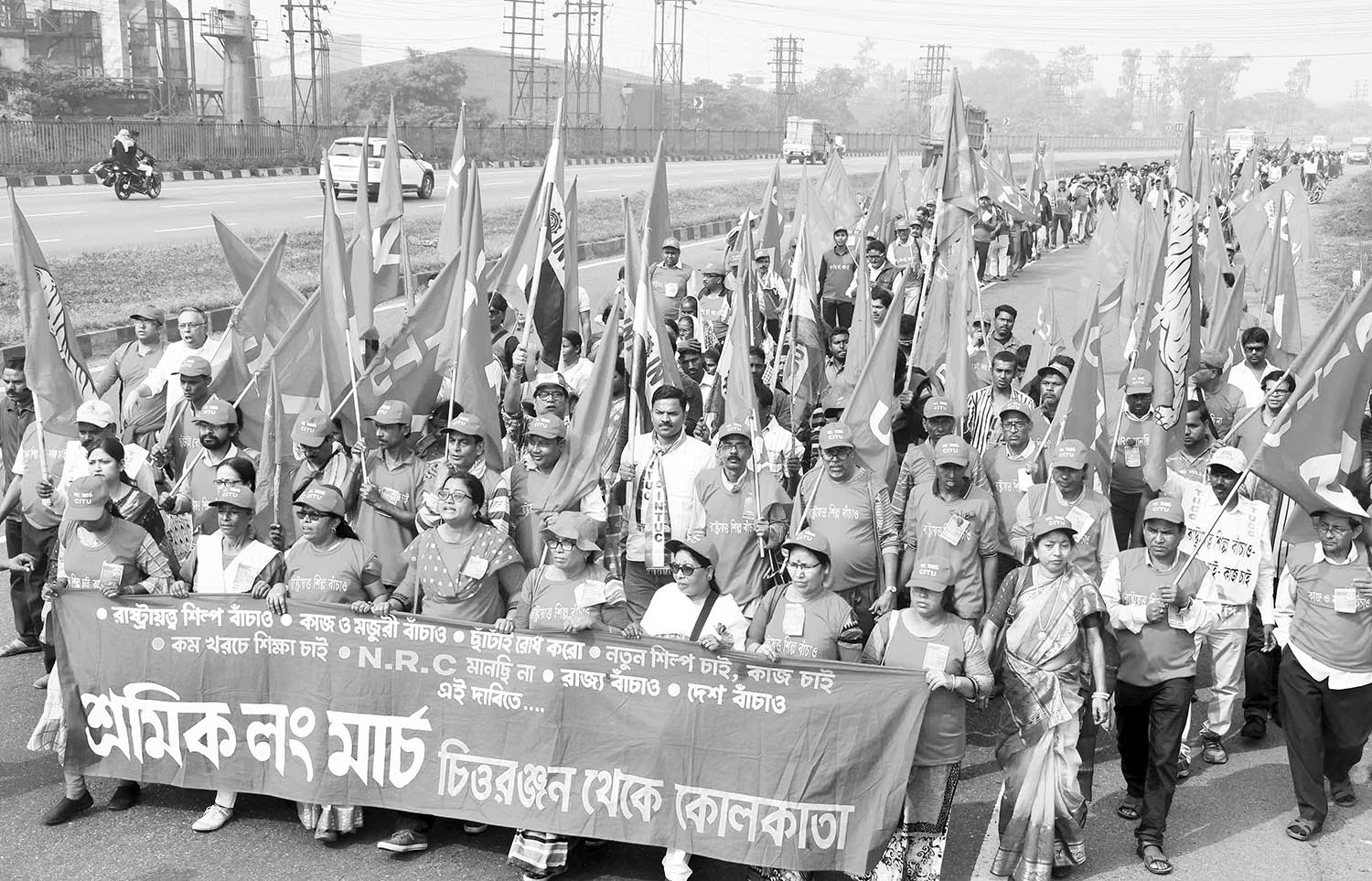
From Our Correspondent
THOUSANDS of people, in a determined show of resistance, are marching through towns and villages in West Bengal protesting against disinvestment of public sector units and demanding jobs. A ‘long march’, the mainstay in South Bengal, started from the gate of Chittaranjan Locomotive Workshop on November 30 which would traverse 283 kilometres and would culminate in a massive public rally in Kolkata on December 11. This march, at the time of the writing has already crossed 130 kilometres. In Northern Bengal, a march started from Maldaha and is progressing towards Siliguri. Similar marches from other northern districts have already begun, which will merge and another big public rally will be held at Siliguri on December 10.
The marches are taking place at the call of central trade unions and mass organisations have lent their support and joined.
The southern long march crossed a major part through the industrial zone of Asansol-Durgapur. This area has suffered most in the disinvestment, by the virtual dismantling of public sector. Right from the days of the first NDA government under Vajpayee, one after another public sector units have been closed, production reduced, rendering thousands jobless. The rally, inaugurated by veteran trade union leader Shyamal Chakraborty started its journey from CLW, one of the foremost manufacturers of rail engines in the country. The central government is now hell bent to downsize the factory, cutting down its production and squeezing it towards a dangerous future. Just a few kilometres away, Hindustan Cables has already been closed despite promises announced by the first Modi government and BJP MP of Asansol. The march progressed through areas in Asansol where central PSUs have been shut down, through Raniganj where Eastern Coal Fields are now being threatened with closure or privatisation, through Durgapur large factory like MAMC which is still closed and Alloy Steel Plant which is shelved for privatisation. The workers of ASP and Durgapur Steel Plant are already resisting this onslaught through consistent movement. This area has also witnessed agonising de-industrialisation in the last eight years of TMC rule and numerous units have been shut down. A sense of gloom, desperation pervades the area. The long march, on the contrary, has infused a strong urge to fight back and thousands of people around have joined in the main march. Workers from organised industries were joined by retrenched workers, daily wagers, contract workers and agricultural workers. The poorest of poor people have enlisted themselves as permanent marchers who will walk the whole 283 kilometres. As the march progresses, thousands are greeting them in streets, garlanding them, providing food and water for them. On the way, public meetings are being held, addressed by trade union leaders. Slogans are matched by songs and cultural performances at the stop over areas, reflecting enthusiasm and grit. The colour of the march is red though trade unions and organisations of other affiliations have also participated.
This march will cross through West Bardhaman, East Bardhaman, Hooghly, Howrah districts to reach Kolkata. Meanwhile marchers have joined them at various points from Birbhum, Purulia and Bankura.
In northern districts, marches have started from border areas in Maldaha, Coochbehar, and South Dinajpur. One of the common agonies of these areas is lack of jobs. Thousands of youth from these districts are migrating to other states for jobs. But in the last few months, the impact of slowdown has thrown them out of those jobs also and many have been forced to return back to villages. This has been intensified by the crisis in agriculture. In tea garden areas of Alipurduar and Jalpaiguri, the crisis in the tea gardens has already led to starvation deaths, intense malnutrition, lack of food and ration. Marchers are raising these issues along with the demand of minimum wage for tea workers.
These marches have also raised voice against divisive issues, particularly the NRC. The RSS-BJP agenda of polarisation and TMC strategy to reap gains from that are being explained to the people. The message of the marches is clear: the only fight back is possible through struggle for livelihood.


